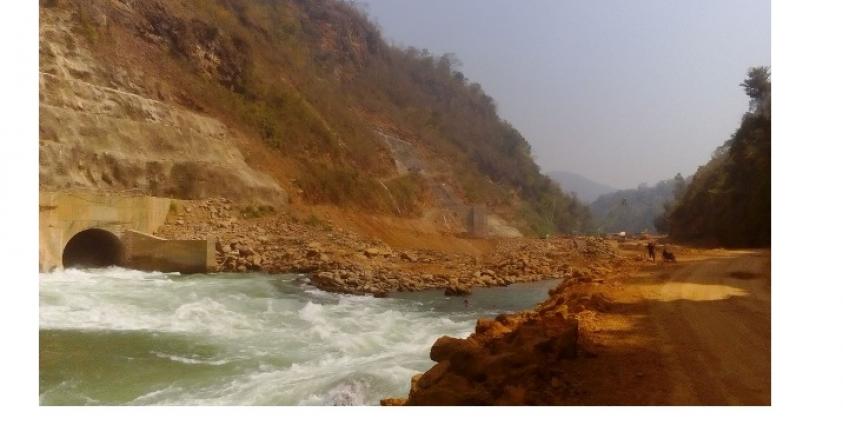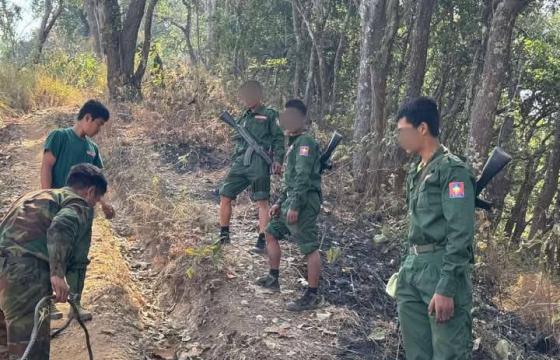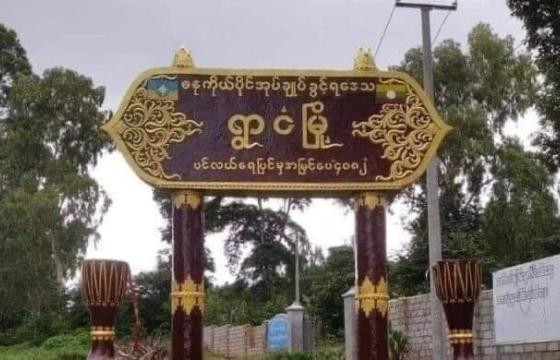The Union Deputy Minister for Electricity and Energy said ‘the people don’t need to worry too much.’
Burma’s government will allow continued construction of a hydropower dam on Shan State’s Namtu River, despite widespread local opposition, a Union minister said.
Earlier this month, Sai Thant Zin—a Lower House lawmaker from the Shan Nationalities League for Democracy (SNLD) representing Hsipaw Township—relayed local concerns about the Upper Yeywa Dam in a Union Parliament session. He urged the government to halt construction of the project on the grounds that it will inflict significant negative impacts on communities in northern Shan State.
Dr. Tun Naing, deputy minister for electricity and energy, responded by saying that the project will move forward, on the grounds that “this government is an elected government” and that laws exist which state that “the government must look ahead for positive and negative impacts before starting any project.” For this reason, he said, “the people don’t need to worry too much.”
“The deputy minister answered that more than 30 percent of the Upper Yeywa hydropower project has been completed—that’s why government will continue to build this dam,” Sai Thant Zin told SHAN. “The government failed to explain the environmental and social impact assessment surveys to the local people. […] As a reflection of the people’s desire, I will try my best in Parliament to oppose the dam construction,” the MP said.
Last month, executive members of the SNLD met locals in Hsipaw Township and agreed to jointly demand an end to the damming of the Namtu River.
The Upper Yeywa is expected to generate 280 megawatts of electricity, and is one of a series of five dams planned for the Namtu—also called the Dokhtawaddy River in Burmese. Located 20 miles south of Kyaukme town, it is expected to create a reservoir that would drown the village of Ta Long, population 700, as well as all of its infrastructure and hundreds of acres of rice paddies and orchards.
Deputy Minister Dr. Tun Naing reasoned in the legislature that officials and locals had already held multiple meetings on the issue. However, locals refused to attend a meeting in March about the relocation of communities that will be flooded by the Upper Yeywa Dam. Villagers also reported feeling deceived by initial explanations of the impacts of the hydropower project by officials.
According to the Shan Human Rights Foundation, no public consultation was conducted beforehand when dam construction began 10 years ago, under the military junta; today many locals oppose a consultation because they stand against “any dam promotion.”
Construction of the Upper Yeywa Dam is backed by companies from China, Switzerland, Germany and Japan. Local activists have pointed out that European firm AF Consult—which was behind the construction of the recently collapsed Xe Pian Xe Namnoy dam in Lao PDR—also contributed to the designing of the Upper Yeywa Dam.
Other proposed dams on the Namtu are in Kyaukse Township in Mandalay, and Shan State’s Nawngkhio, Kyaukme, and Hsipaw townships.







